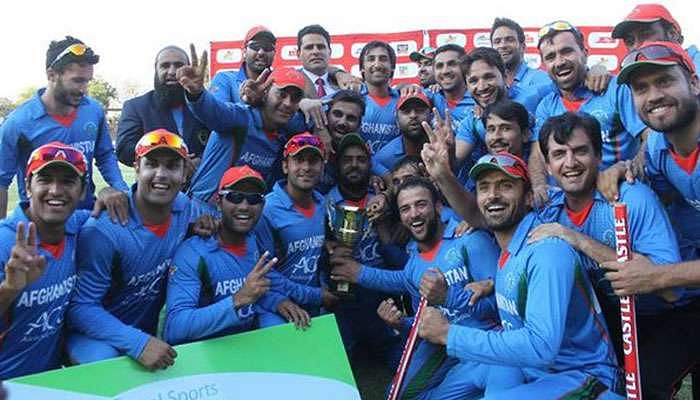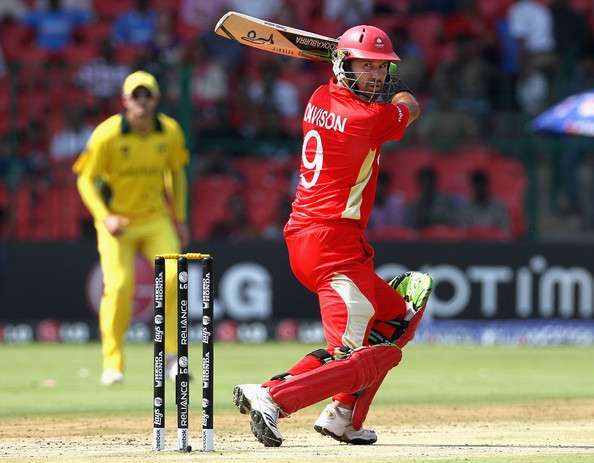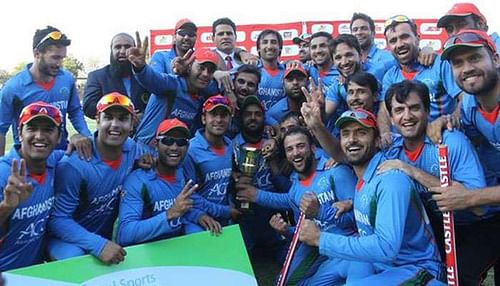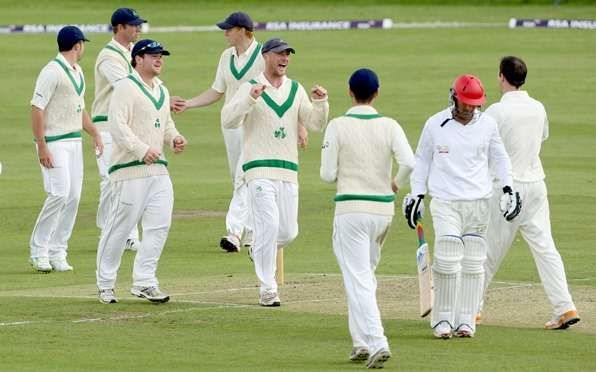
Analyzing how Associates can get more exposure at highest level of world cricket
The participation of Associate teams in ICC events and the exposure given to them at the highest level to test their skills against the top teams has been a subject of debate in recent times. The lack of opportunities for the teams has been criticized widely with many Associate team captains speaking up on the matter, which has only been aggravated by the fact that the ICC plans to limit the number of participating teams in future World Cups.
Given the limited participation that the sport has worldwide, cricket can grow its popularity to match that of other sports like football by expanding and increasing its presence beyond the current group of countries and immigrants elsewhere. The rise of Afghanistan and Ireland with a home-grown setup to a stage where they can challenge the best teams is proof that the sport can grow beyond the usual group of nations.
There's a risk of a repeat of what happened with the Kenyan team, with country’s political landscape along with insufficient support from the ICC resulting in steep in decline in the team’s fortunes. The semi-finalists of the 2013 World Cup have now found themselves losing out to newer teams in the qualification stage for recent ICC world events and losing the ODI and T20I status.
As it has been pointed out by all the Associate teams and also many voices in the cricketing world, the strategy and vision of the ICC needs to be more inclusive for non-Test playing nations. A Cricket World Cup involving just 10 teams could end up being catastrophic for the cricket’s chances of being a truly global sport, as would keeping participation of Associate teams very minimal at the top level.
The concerns of the top teams like India and Australia having to play too much cricket are valid and hence, it won’t be very feasible (and also commercially viable!) to have full tours and bilateral series involving a top team and an Associate team. However. there can be some steps taken which will ensure that the Associates are given the opportunity to play more regularly, while not causing major impact on the schedule and load of the top teams.
Some of the ways by which the Associates can be a given a chance to compete more frequently at the top level are:
Increasing spots in world tournaments

The proposal of having a 10-team event for the 50-overs World Cup in 2019 has been widely criticized. Unlike the 2015 edition where Associate teams were guaranteed some spots in the tournament through a Qualifier tournament held exclusively for the non-Test playing teams, the 2019 Qualifier will involve the lowest ranked Test teams along with the Associates with a genuine risk of participation of none of the Associate teams.
The ongoing 2016 T20 World Cup gave a preview of this format as Bangladesh comfortably qualified from their Qualifier group ahead of strong Associate teams like Ireland and Netherlands (and the surprise package Oman). To their credit, Afghanistan eliminated Test nation Zimbabwe to qualify for the Super 10 stage.
Dutch skipper Peter Borren was understandably upset after losing to Bangladesh in the Qualifier as he knew it was a quick end of the journey for them – "Guys have put a lot of work into this campaign. It started a year ago or close to that starting with the first part of the qualifier in Ireland and Scotland. We shared that trophy and played some really good cricket.
“We sit here now after playing three hours of cricket against Bangladesh, where we came up short. It's extremely disappointing. Obviously, we can't do anything about the weather. There are obviously questions about how much we've had to do to get to this stage as it is. We've won a lot of games and an eight-run loss to Bangladesh and we're gone. It's hard to take."
Reducing the chances of participation of the Associate teams in the major ICC events is likely to affect the domestic set up of the sport in these countries with cricketers either looking for alternative careers or attempt a switch to a Test playing nation (like many top Irish players moved to England).
Hence it’s imperative that cricket’s pinnacle events continue to have the deserved places for the sport’s upcoming and newer teams and thus, there should be multiple guaranteed spots for the Associate teams in the World Cup and World T20 events.
The ICC can use the platform of the Champions Trophy to ensure an elite event where only the top teams participate and even the Test playing nations need to go through a qualification process to compete in the event.
Tri-series tournaments
Instead of holding bilateral ODI and T20I series between Test-playing teams, the competition could include a third team, which could be an Associate nation – probably a team from a neighbouring country (For eg. Netherlands or Ireland for a Tri-series held in England or Afghanistan and Nepal for a competition in the sub-continent).
This could help in exposure to the Associates to compete with top teams, and an opportunity to cause an upset and be noticed in the cricketing world.
Tri-series to provide opportunities to Associate teams isn’t a new concept – India hosted a tournament in 1998 which included Kenya and Bangladesh (a non-Test playing team then).
Two tiers in Test cricket system
ICC has announced the Test Challenge in 2018 in which the winner of the Intercontinental Cup will play against the bottom-ranked Test team in a series of matches which would see the winner having Test status for next four years and relegation for the losing team to Intercontinental Cup.
While in principle this concept holds merit, there is lack of clarity on how ICC plans to execute this playoff and there is going to be scepticism among the Associates that the current Test playing group will try to ensure safety for the member nations from relegation.
The ICC could look at rebranding the Intercontinental Cup as a second tier in the Test system, and give scope for more frequent promotion and relegations – it needn’t have to be every year like in European football, but the system should have credibility and it should have tangible incentives for Associates to aim for, and also serve as a reminder for the Test playing teams to maintain their performance standards or else risk relegation.
Include short bilateral series/matches along with major tours
- In the past, there have been instances of Test teams visiting Associate teams along with a major tour (for example, India played Ireland and Scotland in 2007 when they toured England). More of such matches will help the Associate teams – in getting their local cricket infrastructure developed, generate interest among the locals and also give a chance to their players to face off against the top teams in their home conditions.
These matches can also help the visiting teams prepare for the upcoming series in actual match conditions and also acclimatise to the local weather and environment. Such events can serve as opportunity for best practices sharing from the coaches of the Test teams to the local players, and could possibly also be used as an opportunity to scout for talent for the lucrative T20 leagues worldwide.
Teams touring the subcontinent could make a trip to Nepal or Hong Kong or else play Afghanistan in India/UAE while teams visiting South Africa could play Namibia and those visiting the Caribbean could make a trip to Canada or USA for some matches. By giving official ODI or T20I status to these matches, ICC can ensure that the Test teams try to play their best teams and not use them as practice matches ahead of an important series.
Conclusion
To conclude, for cricket to reach to a level of global appeal, the sport’s administrators have to take steps to ensure that the sport is promoted worldwide and not just limited to a select group of countries and their immigrants. Having more and more countries play the game at the highest level will help in getting mass visibility and following for cricket and make the gentlemen’s game a truly “global sport”.

